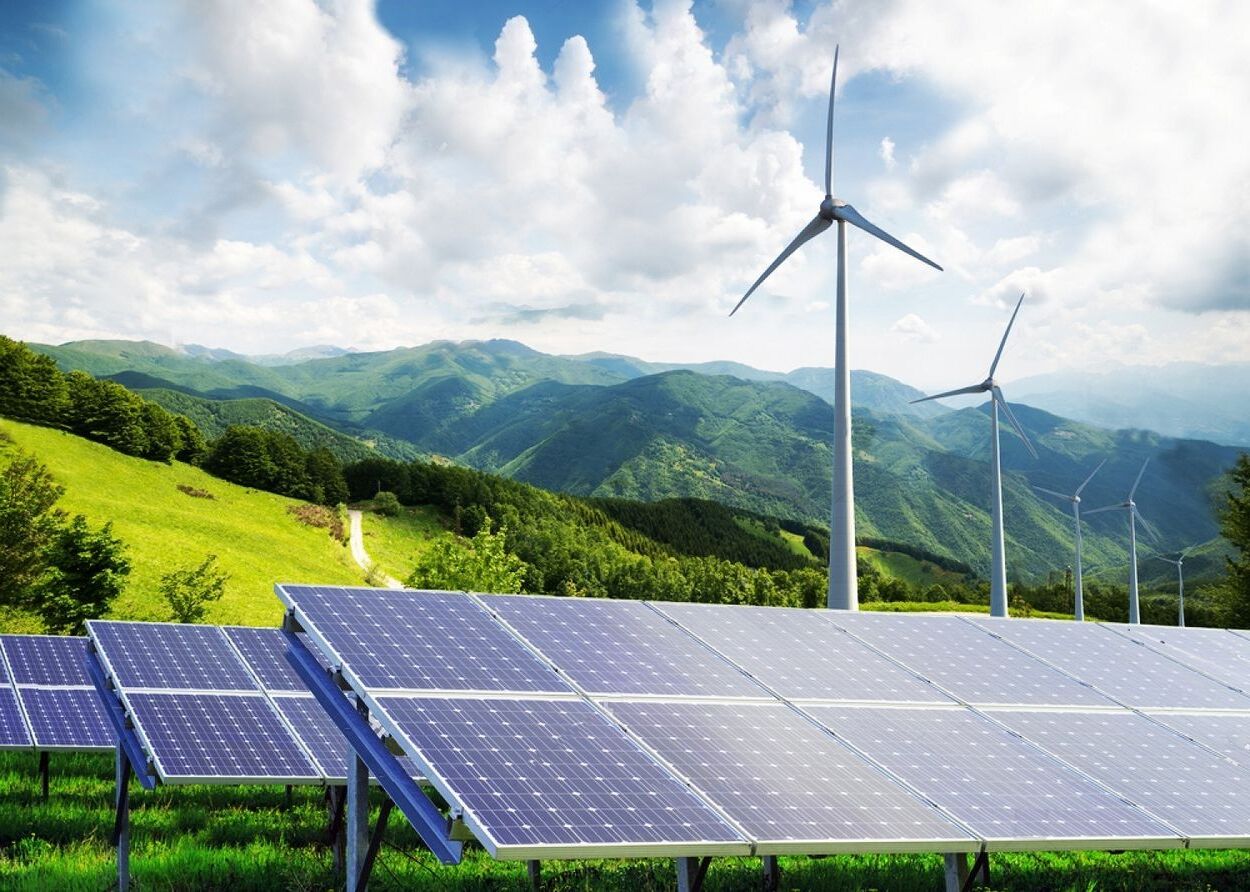
Clean energy is more than just a buzzword; it's a necessity for our planet's future. But what exactly is clean energy? Clean energy refers to power derived from renewable, zero-emission sources that do not pollute the atmosphere when used. This includes solar, wind, hydro, and geothermal energy. Unlike fossil fuels, which release harmful greenhouse gases, clean energy sources help reduce carbon footprints and combat climate change. Curious about how these energy sources work and their benefits? Here are 26 facts that will shed light on the importance and impact of clean energy in our daily lives. Get ready to be amazed by the potential of these sustainable power sources!
What is Clean Energy?
Clean energy is energy derived from renewable, zero-emission sources that do not pollute the atmosphere when used. It also includes energy saved through energy efficiency measures. Let's dive into some fascinating facts about clean energy.
Solar Power Facts
Solar power harnesses energy from the sun using photovoltaic cells or solar thermal systems. Here are some interesting tidbits about this renewable energy source:
- The sun provides more energy to Earth in one hour than the world uses in a year.
- Solar panels can still generate electricity on cloudy days, though their efficiency is reduced.
- The largest solar power plant in the world is the Bhadla Solar Park in India, with a capacity of 2,245 megawatts.
- Solar energy is the fastest-growing energy source globally, with installations increasing by 33% annually.
Wind Energy Insights
Wind energy captures the natural wind in our atmosphere and converts it into mechanical energy or electricity. Here are some cool facts about wind power:
- Wind turbines can be as tall as 650 feet, with blades that span over 250 feet.
- The largest wind farm in the world is the Gansu Wind Farm in China, with a planned capacity of 20,000 megawatts.
- Offshore wind farms can generate more power than onshore ones due to stronger and more consistent winds.
- One wind turbine can power up to 1,500 homes annually.
Hydropower Highlights
Hydropower uses the energy of flowing water to generate electricity. This method has been used for centuries and remains a significant source of renewable energy:
- The Three Gorges Dam in China is the world's largest hydroelectric power station, with a capacity of 22,500 megawatts.
- Hydropower accounts for about 16% of the world's electricity production.
- Pumped-storage hydropower can store energy for use during peak demand times.
- Small-scale hydropower systems can provide electricity to remote communities.
Geothermal Energy Facts
Geothermal energy taps into the heat from the Earth's core to generate electricity and provide heating. Here are some intriguing facts about geothermal energy:
- The United States is the largest producer of geothermal energy, with over 3,800 megawatts of installed capacity.
- Geothermal power plants have a small land footprint compared to other power plants.
- Iceland generates nearly 30% of its electricity from geothermal sources.
- Geothermal energy is available 24/7, unlike solar and wind energy.
Biomass Energy Information
Biomass energy comes from organic materials like plants, wood, and waste. It can be used for heating, electricity, and fuel. Here are some key facts about biomass energy:
- Biomass is the largest source of renewable energy in the United States.
- Bioenergy can reduce waste by converting agricultural and forestry residues into energy.
- Algae can be used to produce biofuels, which are an alternative to fossil fuels.
- Biomass energy can be carbon-neutral if managed sustainably.
Energy Efficiency Facts
Energy efficiency means using less energy to perform the same task, reducing energy waste. Here are some important points about energy efficiency:
- LED light bulbs use up to 90% less energy than incandescent bulbs.
- Energy-efficient appliances can save households hundreds of dollars annually on energy bills.
- Buildings account for about 40% of global energy consumption, making energy-efficient construction crucial.
- Smart thermostats can reduce heating and cooling costs by learning and adapting to your schedule.
The Future of Clean Energy
The future of clean energy looks promising with advancements in technology and increased awareness of environmental issues. Here are some forward-looking facts:
- The International Energy Agency predicts that renewable energy will account for nearly 90% of the increase in total power capacity worldwide by 2025.
- Innovations like floating solar panels and airborne wind turbines are being developed to harness renewable energy more efficiently.
Clean Energy's Bright Future
Clean energy isn't just a trend; it's a necessity. Solar, wind, and hydro power are transforming how we generate electricity. These sources reduce carbon emissions, combat climate change, and create jobs. Innovations in battery storage and grid management make renewable energy more reliable. Governments and businesses worldwide are investing heavily in clean energy technologies. This shift not only benefits the environment but also boosts economies. By adopting clean energy, we can ensure a sustainable future for generations to come. The facts speak for themselves: clean energy is the way forward. Embracing these technologies will lead to a healthier planet and a more resilient energy system. So, let's support policies and initiatives that promote clean energy. The future looks bright, and it's powered by clean energy.
Was this page helpful?
Our commitment to delivering trustworthy and engaging content is at the heart of what we do. Each fact on our site is contributed by real users like you, bringing a wealth of diverse insights and information. To ensure the highest standards of accuracy and reliability, our dedicated editors meticulously review each submission. This process guarantees that the facts we share are not only fascinating but also credible. Trust in our commitment to quality and authenticity as you explore and learn with us.


